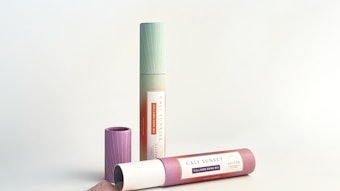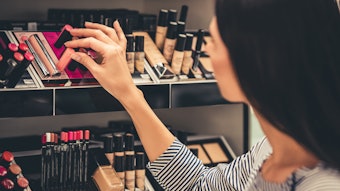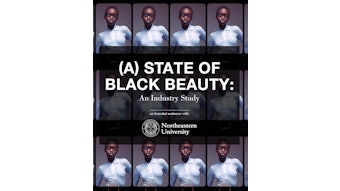- Hair care accounted for 18% of value sales in 2010, though it was also one of the hardest hit segments during the downturn.
- Purchasing larger formats and opting for premium-end brands or those with salonlike features to replace visits to the salon were two major consumer trends that sprouted from economic declines.
- The potential of hair care products with anti-aging properties is underlined by a growing number of launches.
- Within Western Europe, dry shampoo could be one of the most important drivers for value growth.
As the global economic downturn is tempering off and showing signs of recovery, some companies are finding a moderate return to growth. In 2010, the 10 leading beauty brand owners saw their combined value sales (in U.S. dollar year-on-year exchange rates) increase by 7%; an improvement from the slight 1% decline in 2009. For these players, a few key strategies are at play: increased presence in the emerging markets, development in areas of innovation, and acquisitions that help to increase sales and margins.
Of the largest beauty categories globally, hair care accounted for 18% of value sales in 2010 and was also one of the hardest hit segments during the downturn. According to research firm Euromonitor International, hair care recorded a drop of 2% in 2009, largely due to consumers trading down to less expensive options and relentless discounting, including “buy one get one free” offers. In 2010, the category did see an increase of 7% in value sales, which is broadly in line with growth in the overall industry and a decent performance given the relative size and maturity of hair care.
Latest Consumer Trends
As is the story with most consumer good products, the markets that were largely impacted by the downturn included mature, saturated markets such as North America and Western Europe.
Nevertheless, in this negative scenario two main trends sprouted; the first one is the inclination to choose bigger formats, which offer a better value for money ratio. The second trend involves consumers opting for premium-end brands or those with salonlike features to replace visits to the salon. While many salons were forced to offer discounts to consumers in order to maintain foot traffic, the exceptional growth of categories such as colorants and at-home perm kits indicates female consumers are still choosing to color their hair at home. As a consequence, the colorants category, previously one of the less dynamic areas of hair care, has become a hive of new product development activity and renewed consumer interest, according to Euromonitor International.
In line with this trend, there are also an increasing number of salonlike treatments making a strong foray into the retail market. Renowned U.K. salon brand Charles Worthington, for example, added a new semi-permanent straightening kit to its Salon At Home range in early 2011 as a less expensive alternative to popular Brazilian blowout treatments. Similarly, Dove’s Nutri-Oil Care range, due to launch globally by the end of 2011, is boasting luxurious and intensive hair treatment formulations, traditionally confined and associated with those obtained in salons.
Eastern Europe; Latin America Driving Growth
While growth remained sluggish in North America and Western Europe, emerging regions did their part to boost hair care category growth. Particularly strong performances were put in by Eastern Europe (8% value growth 2010–2009) and Latin America (17%). Improvements in income, distribution and retail networks are all driving factors behind the strong growth of hair care in both regions. The sharp increase in chain retailers has allowed consumers in some emerging markets more exposure to a wider variety of products than ever before, and this has led to sales in the category beyond basic products (such as shampoo) to conditioners and styling agents. The relative immaturity of these markets offers fantastic potential. In stark contrast to the developed markets, there is far more scope for long-term growth as consumers, in many cases, are only beginning to trade up.
Innovations Lean on Ingredients and Naturals
For more mature markets, brand owners adopted strategies with the core objective of offering added value. In order to apply this concept, some companies are exploring the use of novel ingredients for value sales growth opportunities. In this context, the natural trend continues to be high on the agendas of key players, leading to more mainstream brands launching products in this segment.
One of the most important examples in line with this trend is the launch of a green line from L’Oréal’s Garnier Fructis brand: Pure Clean, which promotes a silicone and paraben-free formulation and more than 90% biodegradable ingredients. As part of the line, the company is offering shampoo, conditioners and styling products, evidence of the fact that the company plans to invest in this category rather that exploit a temporary trend. Procter & Gamble’s Pantene ProV Nature Fusion is another good example of how big companies are very keen to focus their R&D investments on products based on natural ingredients.
Investment in this area can be seen as a structural response to the natural trend. That being said, there remains an issue of effectiveness, which keeps some manufacturers from investing further in this direction. For example, the use of natural antioxidants products that have some antimicrobial properties, such as rosemary extract and green tea extract, are just not as effective as traditional preservatives, which could be a barrier for further launches.
The category of hair care products with anti-aging properties is also an area underlined by a growing number of launches, many of which are focused on hair loss and coloring [for more on this category, read Ageless Tresses—Building the Complete Anti-aging Hair Care Line]. Statistics for the global hair loss category show growth reached almost 39%—5.3% compound annual growth rate (CAGR)—2005–2010 to reach a value of $681 million in 2010. Asia leads the way by far, posting a 7.2% CAGR over the same period to reach value sales of $433.3 million in 2010.
Within Western Europe, dry shampoo could be one of the most important drivers for value growth, as these products have a higher price per liter and can offer higher margins. Companies in the region are struggling to find premium products that appeal to consumers, and in this case, dry shampoo is perceived as a very convenient product because it is quicker to use and does not require water.
Dry shampoo is performing well in the U.K., but companies are already seeking to move beyond this market into other key hair care markets. Dry shampoo is by no means a new innovation, but sales have surged recently due to frequency of use. For example, the brand Batiste has been on sale in the U.K. for many years but only recently regained popularity with the festival culture in the U.K., where festival-goers are unable to wash their hair for several days on end. The fact that users do not need water also attracts eco-aware consumers who are concerned with the scarcity of water, and the damage linked to the use of chemical products and the residual that ends up in public water. As a result of growth in the category, late 2010 marked the entrance of one of the major players in hair care into dry shampoo, moving the product beyond its niche status and into the mainstream. Unilever entered the dry shampoo segment with a product called Fresh Start under the TRESemmé brand, acquired by Unilever via the acquisition of Alberto Culver in 2010.
Acquisition Boost Companies Growth
Other than innovation, acquisition could be an extremely functional tool for a company looking to enter other markets. In the case of Unilever Group—which agreed to pay $3.7 billion for Alberto Culver, the world’s sixth largest hair care brand owner—the deal has increased the company’s global share of the beauty industry from 6.8% to 7.2%, cementing its third place ranking behind industry leaders Procter & Gamble and L’Oréal. Although Alberto Culver is very strong in the U.S., the acquisition is extremely interesting for Unilever for accessing emerging markets, including Mexico, China and Argentina.
Acquisitions are expected to be the quickest and most effective way for companies to enter emerging markets, while innovation will be the main tool for companies seeking to increase sales in mature markets. Both are expected to be core strategies for companies and could be successful if supported by effective marketing campaigns.
Fabrizio D’Alete is a research analyst at Euromonitor International.










